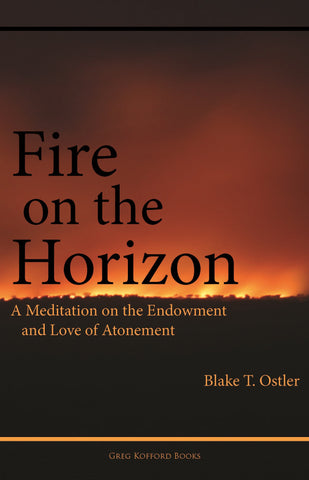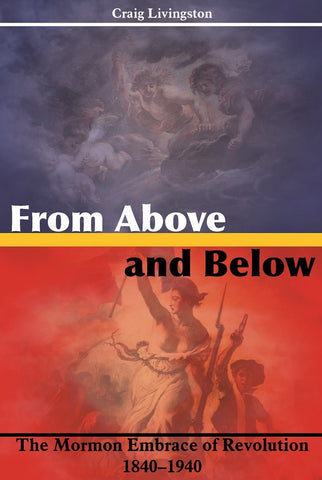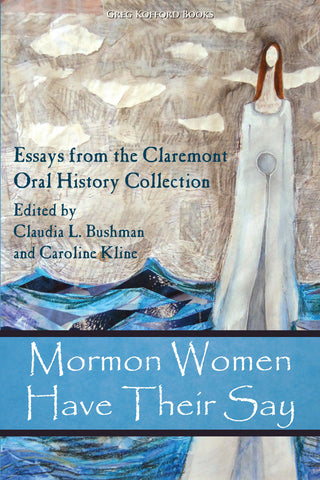Mormon and Maori
$24.95
2015 Best International Book Award, Mormon History Association
- “Unflinchingly honest yet unfailingly compassionate, Mormon and Maori is a must-read.” — Grant Underwood
- “An exemplary scholarly work.” — Gina Colvin
- “Newton's work should be considered groundbreaking.” — Journal of Mormon History



Available in ebook for Kindle, Nook, Kobo, Google Play, and Apple.
Also available through Amazon.
Download a free sample preview.
Book Description:
Mormon and Maori examines the appeal of Mormonism for the Maori of New Zealand from its first introduction to them in the 1880s and the reasons for its continuing success. It discusses the impact of an American religion on its Maori converts and their culture over the last 130 years and surveys the attempts of American leaders and missionaries of the Church of Jesus Christ of Latter-day Saints to find a consistent policy reconciling Mormonism and Maoritanga.
Comprehensive Table of Contents:
.
Preface
Introduction
Time Line
1. Mormon Beliefs and the Maori
Maori Prophecies and Mormonism
“Top-Down” Conversion Pattern
Perceived Mormon/Maori Parallels
Cultural Immersion of Mormon Missionaries
Maori Alienation from Mainstream Christian Churches
The Book of Mormon and Maori Origins
Early Mormon Teachings about Polynesian Origins
First Mormon Interaction with Maori
An Uncanonised Doctrine
Rethinking Polynesian Origins
Early Mormon Attitudes to Maori “Lamanites”
Nephites or Lamanites?
White and Delightsome
2. Mormon Schools in New Zealand
Maori Schools in New Zealand
Mormon Motives for Establishing Schools
Early Mormon Schools
The Maori Agricultural College
Choice of Land
An American High School in New Zealand
Staff and Students
The Final Years
The Myth of the MAC
A New School Proposed
3. Mormon Legends in New Zealand
John Ephraim Magleby in the Waiapu Valley, 1886
Matthew Cowley and the Translation of the Doctrine and Covenants
David O. McKay and the Gift of Interpretation of Tongues
What Happened at Hui Tau, 1921
What Is Believed to Have Happened at Hui Tau, 1921
Birth of a Miracle Story
Anatomy of a Myth
An Unnecessary Miracle
Implications for the Church
An Uncelebrated Miracle
History or Myth?
4. Mormon Leaders and Maori Culture
Mormonism and Maori Marriage Customs
Mormonism and Maori Funeral Customs
Ambivalent Attitudes to the Haka
Moko (Tattooing) and Tohunga Healing
Mormon Policymaking
5. Mormon and Maori?
Early Polynesian Saints and the Gathering
Maori Interest in Gathering
A Renewed Proposal for a Mormon “Colony” in New Zealand
Maori Rejection of Assimilation
The Impact of Ratana on the LDS Church
Swing to Biculturalism
The Role of Hui Tau
Gospel Culture to Supersede National Cultures
Preservation of Cultural Symbols Encouraged
Islander Immigration into New Zealand
Biculturalism—but Not for Maori
Policy Set at Local Levels
Mormon Pride in Integration
Modern Mormonism and Maori Communalism
Cultural Conflict for Pakeha as Well as for Maori Mormons
Changing Doctrinal Emphasis in Mormon Discourse
Glossary of Maori Words
Glossary of LDS Terminology
Bibliography
Shortened Citations
Citations
Index
Q&A with the Author:
.
Q: What attracted your interest in the Mormon experience in New Zealand and ultimately led to this book?
A: My interest in New Zealand LDS Church history began when I was a young teenager in the late 1940s and Elder Matthew Cowley, newly called to the Council of the Twelve, spoke at our district conference in Sydney, Australia. Elder Cowley’s stories of the faith and devotion of the Maori Saints in nearby New Zealand held me enthralled.
However, the idea of writing about Mormonism in New Zealand never entered my mind until nearly five decades later. My history of the Church in Australia (Southern Cross Saints: The Mormons in Australia) was published in 1991 by the Institute for Polynesian Studies at BYU Hawaii. Soon afterwards, Dale Robertson of IPS suggested that there was a need for a more detailed history of the Church in New Zealand than was currently available, and asked if I’d be interested in writing it.
Q: So you started with the history of Mormonism in Australia? But how did that lead to Mormonism in New Zealand?
A: It’s actually fairly logical from a historical point of view. The original Australasian Mission, based in Sydney, Australia, was organized in 1851. It covered all the British colonies in Australia and New Zealand, although the first missionaries didn’t get to New Zealand until 1854. The Australasian Mission wasn’t divided into separate Australian and New Zealand missions until the 1890s.
Southern Cross Saints was based on my MA Honours thesis, and my supervisor at the University of Sydney, where I was a mature-age student (a very mature-aged student) encouraged me to proceed to a doctorate – but not in Mormon history. This was because no one in the History Department at Sydney University at that time had any expertise in Mormon history. I’d virtually given up the idea of a doctorate. Then Eric Sharpe, a world-respected missiologist teaching in the School of Studies in Religion there, read Southern Cross Saints and offered to supervise my doctoral candidacy if I transferred to his department. So I found myself with both a topic and a supervisor. As my proposed topic wasn’t my own idea but was suggested to me by someone who thought I could fill a need in the history of the LDS Church in the Pacific, I felt that Dr Sharpe’s message was a great blessing and a confirmation that with his help and advice, I should go ahead and do my best.
I was very nervous about starting this project, because I’m an Australian rather than either a Maori or Pakeha (European) New Zealander. So I felt somewhat presumptuous in attempting to deal with Mormonism in New Zealand. But the more research I did on this topic, the more I wanted to know. I became more and more excited about it and more and more deeply committed to it.
Q: How does Mormon and Maoridiffer from Tiki and Temple?
A: Both books are developments of my doctoral dissertation, which was examined in 1998. But they are very different books.
Tiki and Temple is a history of the LDS Church in New Zealand that expands the first two chapters of my dissertation into a detailed chronological narrative. The story begins with the arrival of the first Mormon missionaries in New Zealand in 1854. After slow (but significant) achievements among the Pakeha residents of New Zealand, the missionaries began proselytising among the Maori in the 1880s. Tiki and Temple recounts their success. By 1901, the Book of Mormon had been translated into Maori, and seventy-nine LDS branches had been organized in New Zealand with nearly 4,500 members, about 90 percent of them Maori. This success continued and reached a high point with the dedication of the New Zealand Temple, the opening of the prestigious Church College of New Zealand, the organization of the first stake and the division of the New Zealand Mission, all in 1958.
Today there are well over 100,000 Latter-day Saints in New Zealand, more than two-thirds of whom are estimated to be Maori – about 11.5 percent of the total Maori population. The LDS Church is the sixth-largest church in the country.
Q: So your goal in writing Tiki and Temple was primarily to supply a narrative history of the Church in New Zealand that Mormon readers everywhere could use as both a resource and as engaging reading?
That’s right. My hope is that Tiki and Temple achieves two goals: first, of portraying the inspiring faith and devotion of both the American missionaries and mission presidents and their Maori and Pakeha converts, and second, of maintaining historical accuracy to the best of my ability.
Q: But getting back to Mormon and Maori—you obviously didn’t need to do another narrative history, so what were your objectives with this second book?
A: Yes, Mormon and Maori is quite different. It’s an updated version of the main thrust of my dissertation, where I discuss several topics that illustrate the impact of both Mormon doctrine and Mormon culture on the Maori Saints from the 1880s to the present day.
Q: Maori culture—how does it fit with the strongly American version of Mormonism that we’re probably all familiar with?
A: Mormon and Maori discusses not only the reasons why Maori were attracted to Mormonism, but the difficulties faced by both American missionaries and Maori Saints as they struggled to identify which aspects of Maoritanga (Maori culture, the Maori way of life) were compatible with the gospel, and which weren’t. Because decisions of successive mission presidents weren’t always consistent and were often influenced by their own American culture, many problems occurred and recurred in the mission over the last century.
Mormon and Maori sits squarely in the middle of the discussion of cultural/national accommodation, resistance, assimilation, and compromise. My last chapter deals with a difficult question – how Maori may a Maori Mormon remain?
Q: And what’s your answer?
I’m certainly not qualified to give answers. But I hope that Mormon and Maori will be a helpful voice in the discussion. I think this question has even more relevance today than when I wrote my dissertation, in the light of both the enormous international growth of the Church and the recent controversy over DNA research. That discussion is significant not only to American “Lamanite” Mormons and all the Polynesian Saints in the Pacific, but to anyone who is interested in the current expansion of Mormonism among many races and cultures worldwide. While many of our General Authorities today urge members to prioritise a “celestial” rather than a racial or national culture, how feasible is this ideal in everyday life? What parts of their culture might converts in Africa and Asia have to give up, and what may they retain, as they accept Mormonism?
Q: Obviously the New Zealand experience provides helpful precedents—and perhaps even a model—of how to grapple with those questions?
A: The message of the gospel is that “all are alike unto God” (2 Nephi 26:33), but each of us faces the challenge of reconciling our own cultural backgrounds with the imperative of truly seeing and accepting each other as brothers and sisters. Mormon and Maori recognises that our culture is an integral part of us, not easily discarded and not easily subjugated to a higher law. This was just as true for American mission presidents and missionaries serving in New Zealand as it was for their Maori converts - and still is for many of the descendants of those converts. It applies today as the Church attracts converts in yet more countries and among people of other cultures around the world today. There are no quick or easy answers, but I’d like to think that Mormon and Maori might help us better understand both the New Zealand experience and the problems faced in many stakes and missions today.
Praise for Mormon and Maori:
“Mormon and Maori is the result of a labor of love that reflects not years but decades of diligent research. Indeed, in combination with Newton’s earlier Tiki and Temple, it constitutes the most detailed discussion in print of the fascinating 160-year saga of accommodation and adjustment between Maori culture and Mormonism. Unflinchingly honest yet unfailingly compassionate, Mormon and Maori is a must-read for anyone interested in the extraordinary history of the LDS experience in New Zealand.” — Grant Underwood, Professor of History, Brigham Young University
“Marjorie Newton’s Mormon and Maori is an exemplary scholarly work. In this volume Newton deftly untangles the historical and narrative threads that have given rise to a singular variant of Mormonism. Mormon Studies scholars and general readers alike will find this beautifully crafted book an important addition inasmuch as it draws attention away from Mormonism at the core and seeks to make sense of an indigenous American religion in the community’s cultural borderlands.” — Gina Colvin, Ngati Porou, Nga Puhi; Lecturer, University of Canterbury, New Zealand
“Mormon and Maori offers a substantial historical account that structures and organizes te iwi Māori's (The Māori people's) often complex relationship and attachment to an American religion. In this respect Newton's work should be considered groundbreaking.” — Gina Colvin, Journal of Mormon History, Volume 42, Issue 1
About the Author:
Marjorie Newton has published award-winning articles in the Journal of Mormon History, BYU Studies and Dialogue: A Journal of Mormon Thought, as well as several articles in The Ensign. Her Tiki and Temple: The Mormon Mission in New Zealand, 1854–1958 (Greg Kofford Books, 2012) was awarded the Best International Book Award from the Mormon History Association.
More Information:
251 pages
ISBN: 978-1-58958-639-0
Published April 2014






Share this item: